|
|
 Oregon Oregon  Gold Gold The textual material on this webpage is drawn directly from my work America – The Covenant Nation © 2021, Volume One, pages 259-261. |

|
|
The Oregon Question
The Oregon Territory had been left out of the 1842 Canadian-American border treaty because both sides, British and American, were unwilling to flex on the issue. The British claimed the area south to the Columbia River (today forming most of the border between the states of Oregon and Washington) whereas the Americans claimed the area north to the Russian border at Fort Simpson on the Fraser River or roughly to the 54°40' parallel. Polk had promised in his presidential campaign that along with the Texas issue he would bring the Oregon border conflict with the British to some kind of resolution. Polk thus proposed a compromise of extending the 49th parallel east of the Rockies now all the way to the Pacific, though swinging that line a bit just below Fort Victoria on Vancouver Island facing the strategic Puget Sound. At first the British rejected this proposal. But the Americans made their original claim to the 54°40' parallel something of a war cry ("Fifty-Four Forty or Fight") and the British decided that the pressing of their own claim was not wise. They thus instructed British negotiator Packenham to come to terms with American Secretary of State James Buchanan on the basis of Polk's original compromise. Terms were quickly agreed on. Thus in mid-June of 1846, just as the Americans were moving against Mexico, the Senate approved the Oregon Treaty. The Oregon Trail. Even before the treaty was signed, both Christian missionaries seeking to bring the Indians to Christ and land-hungry Americans had begun pouring into Montana, Idaho, and the Pacific Northwest. Starting their trek from Independence Missouri, they followed the Missouri and Platte Rivers west to the Rockies, crossed rivers, mountains, snow, and ice before descending down into the lush Oregon territory along the Columbia River. By the time of the 1846 treaty more than 6,000 Americans had made their way to the Oregon Territory, to begin a new life there. 1"Westward
Ho!" ... originally the call of London boatmen serving as taxis on the
Thames River, taken as the name of an English play in 1607, later
carried to America and popularized in an 1832 novel of that name by
James Kirke Paulding.
|
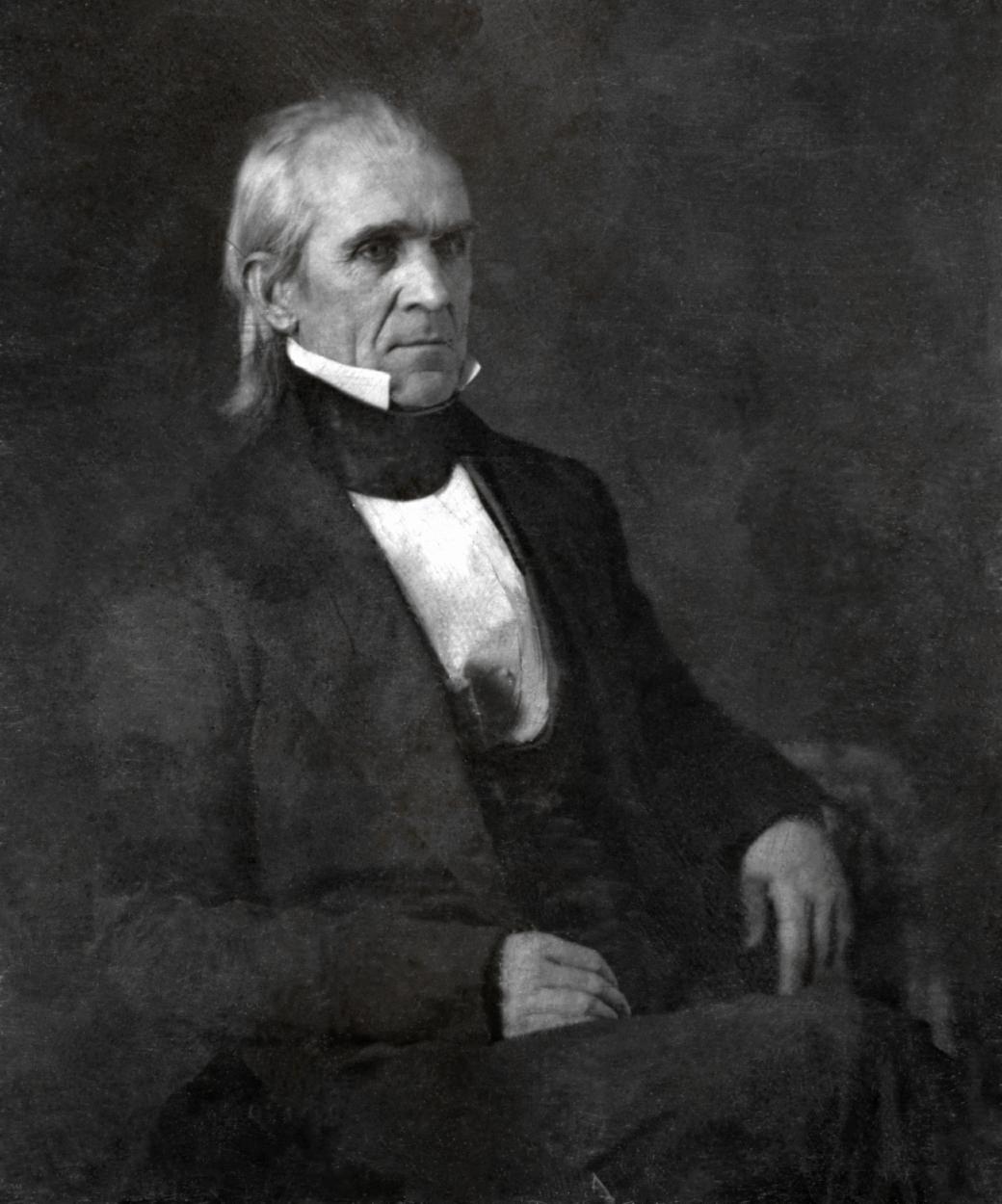
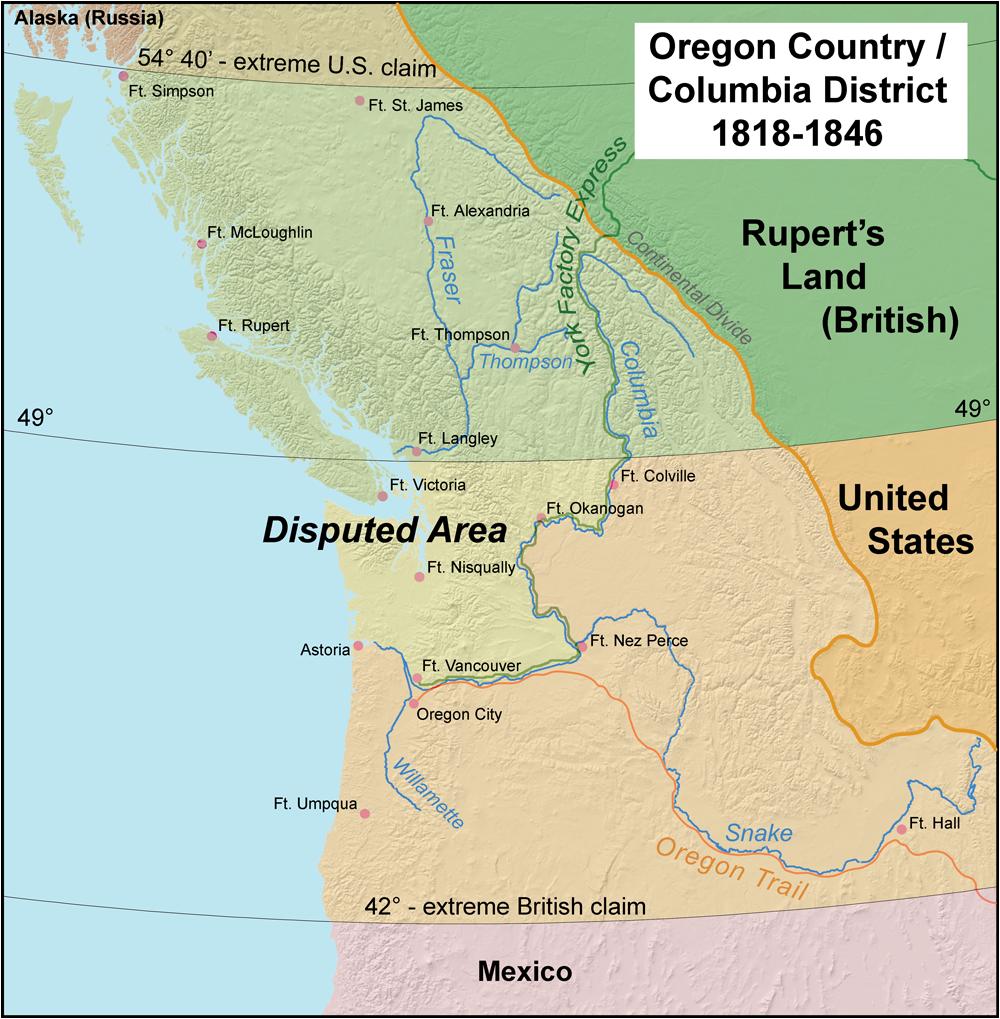
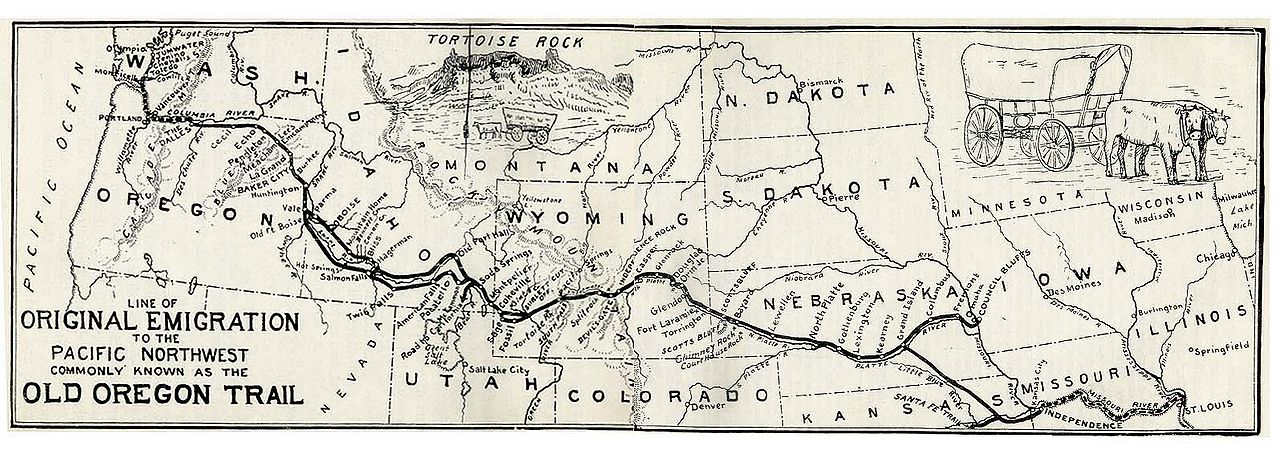
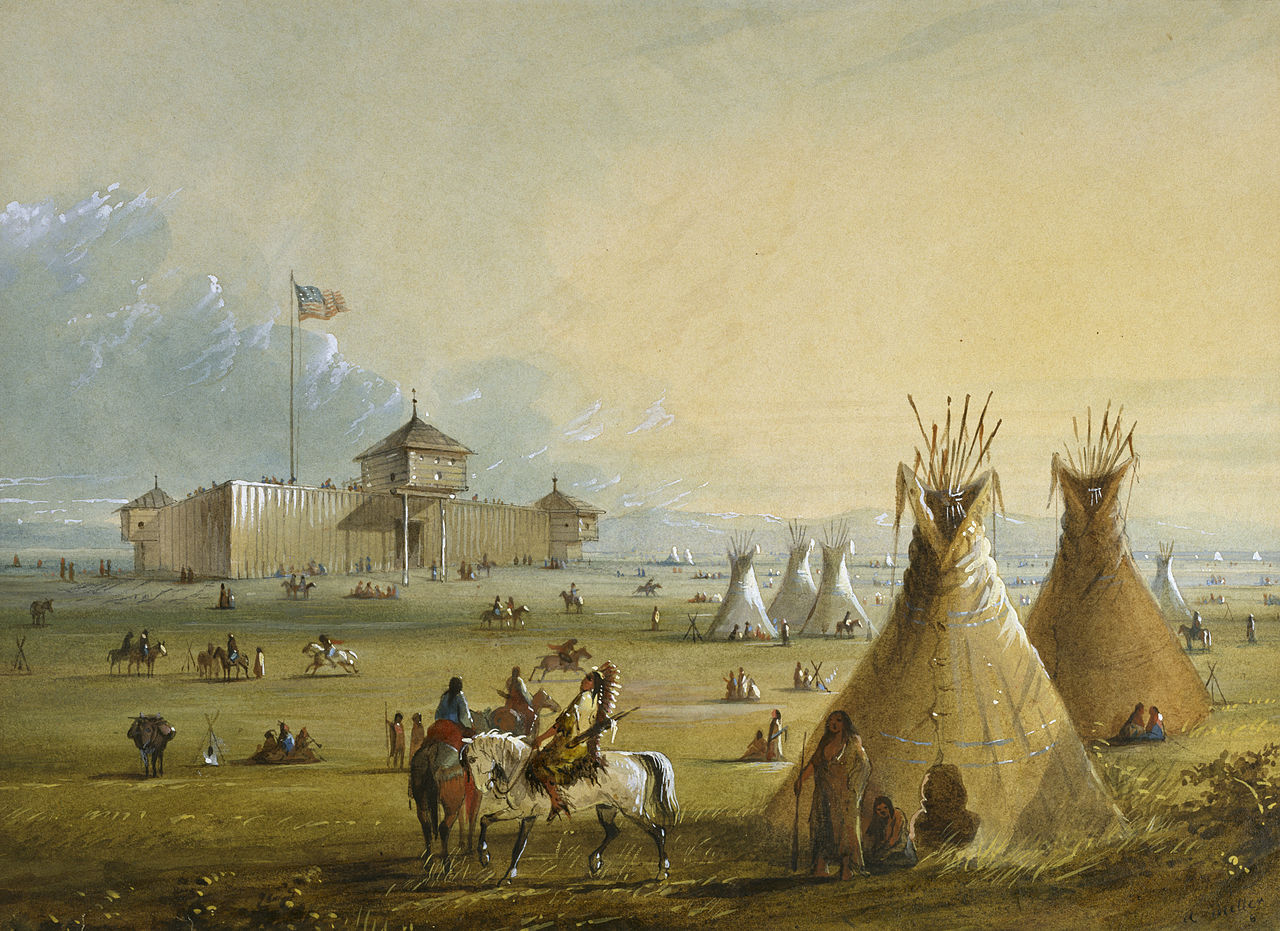
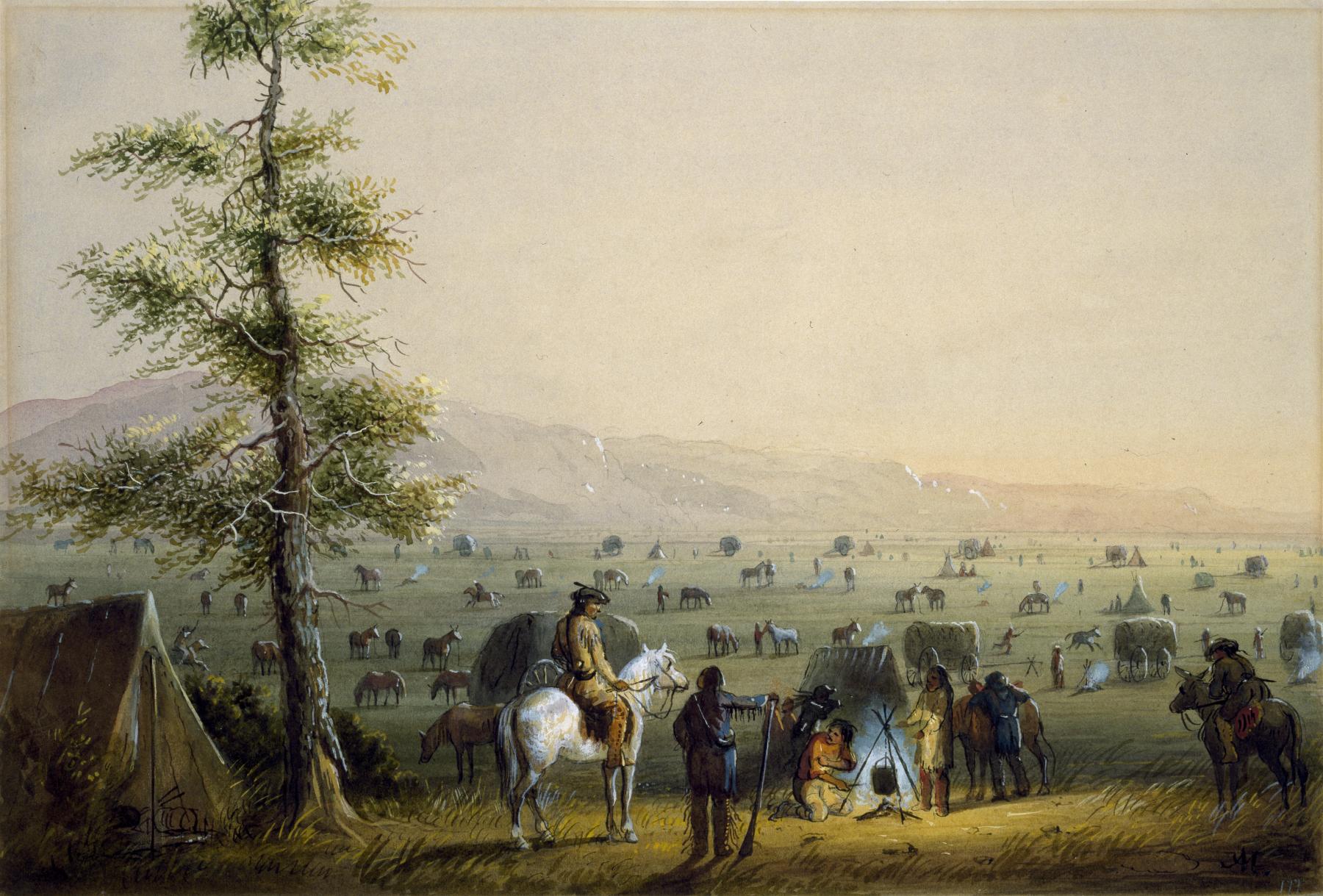
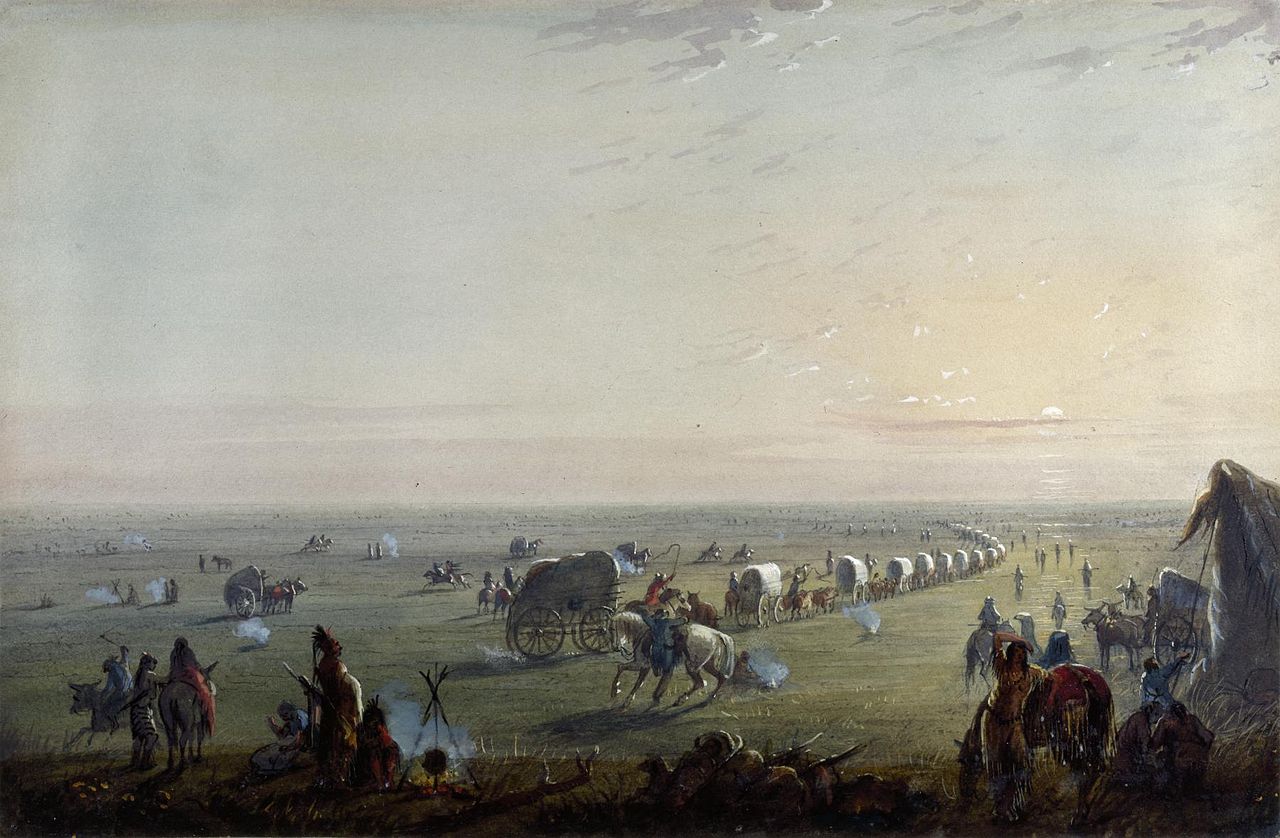
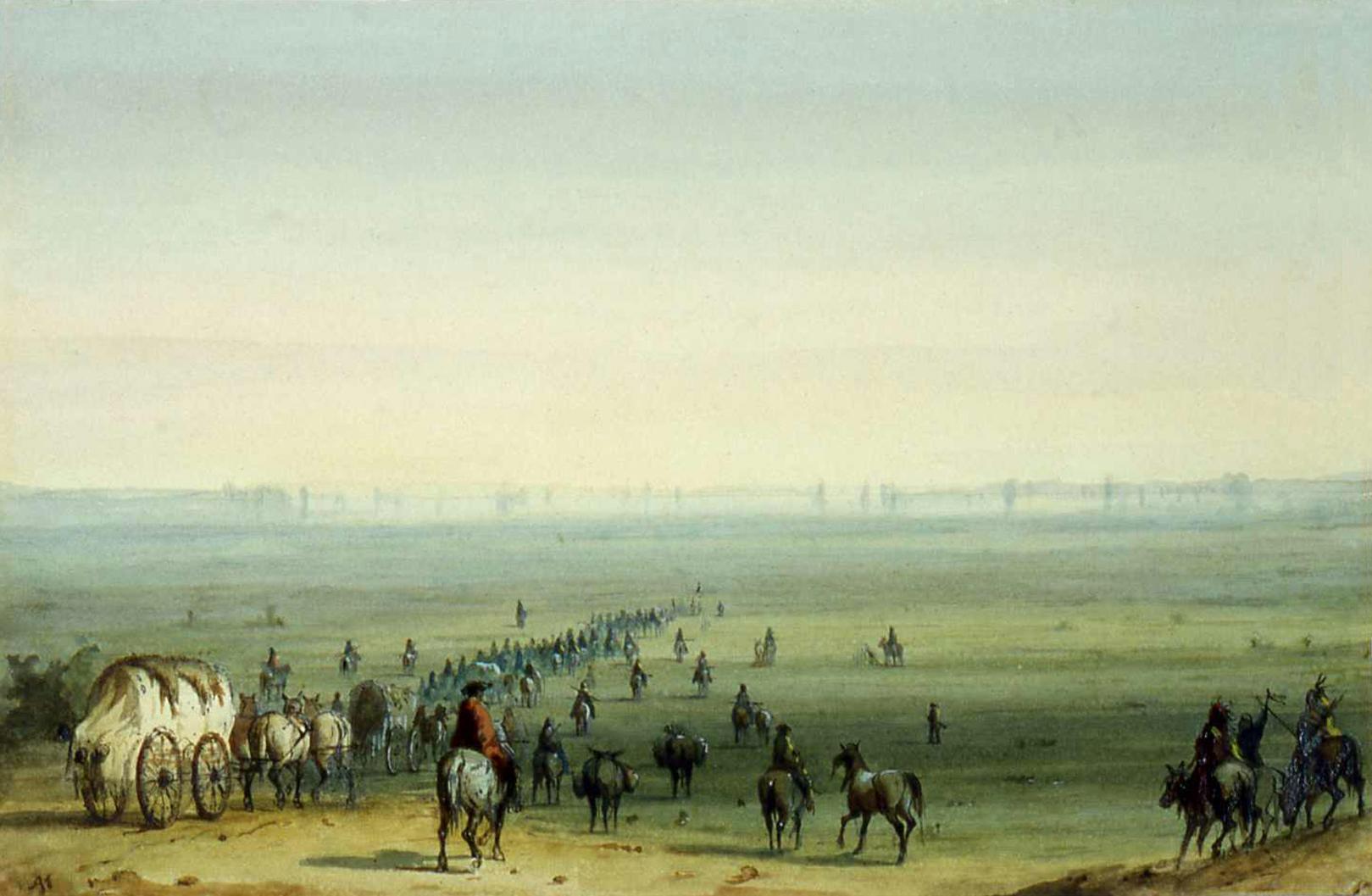
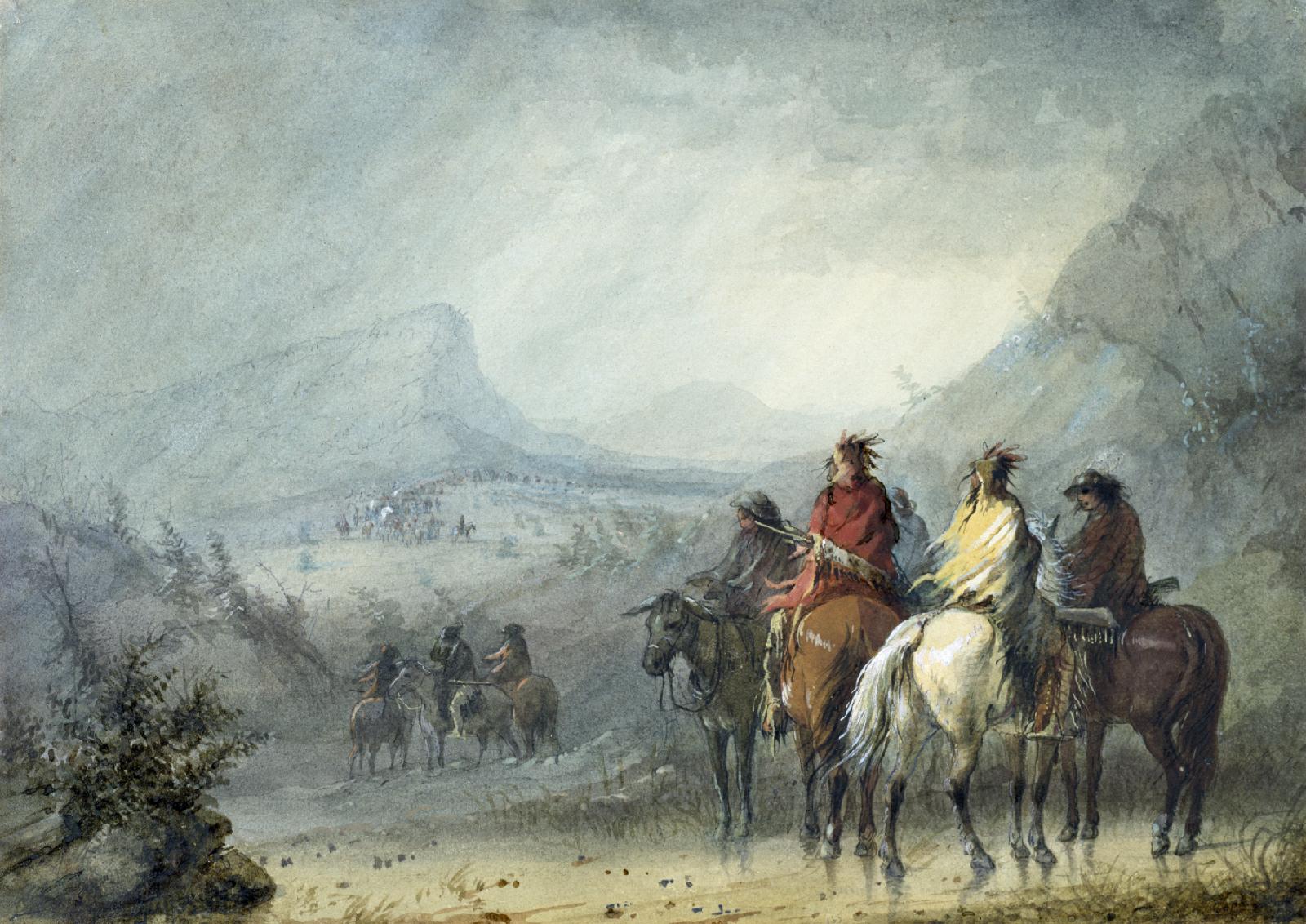
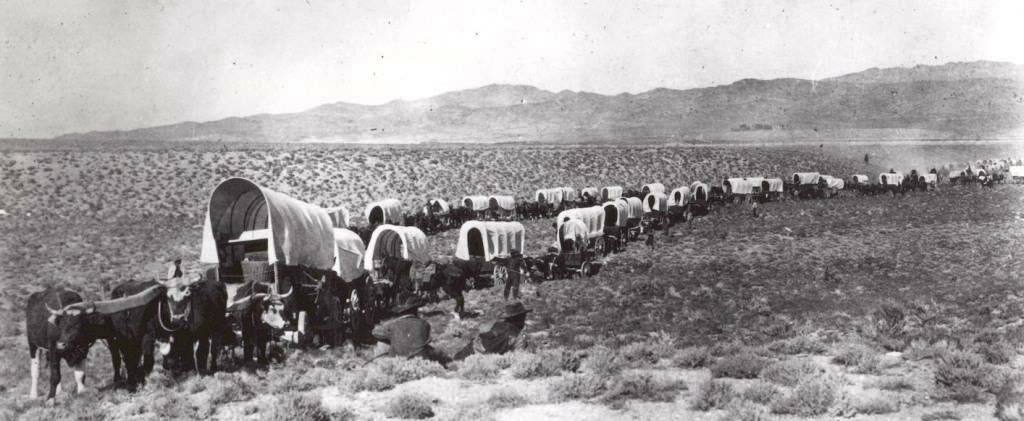
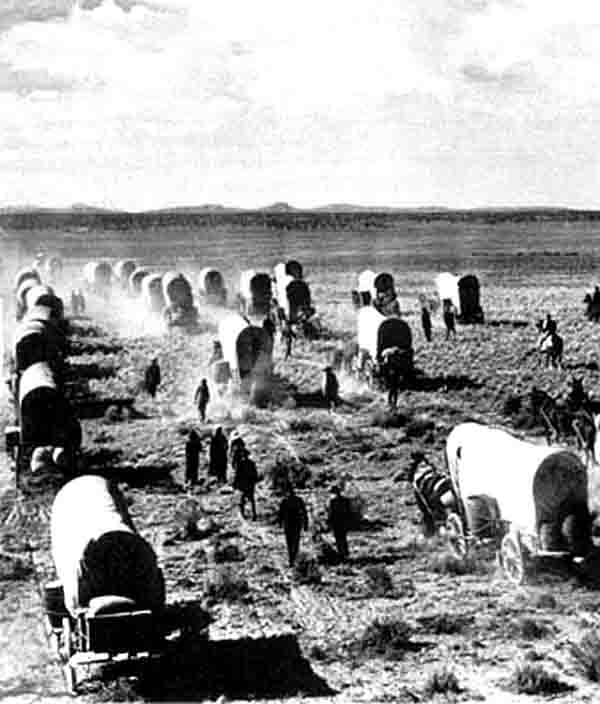
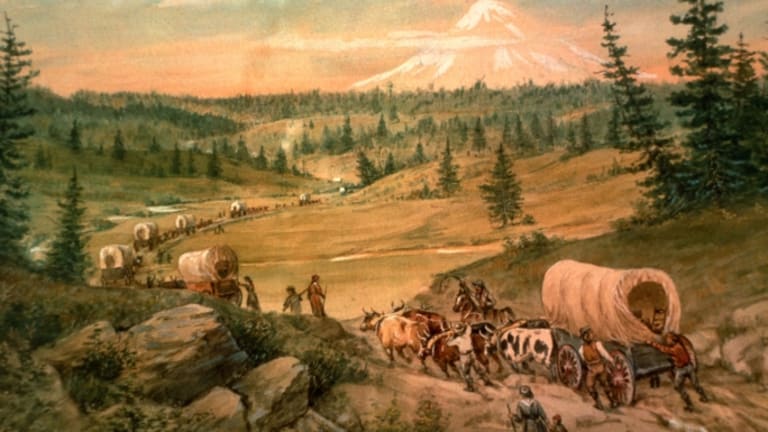
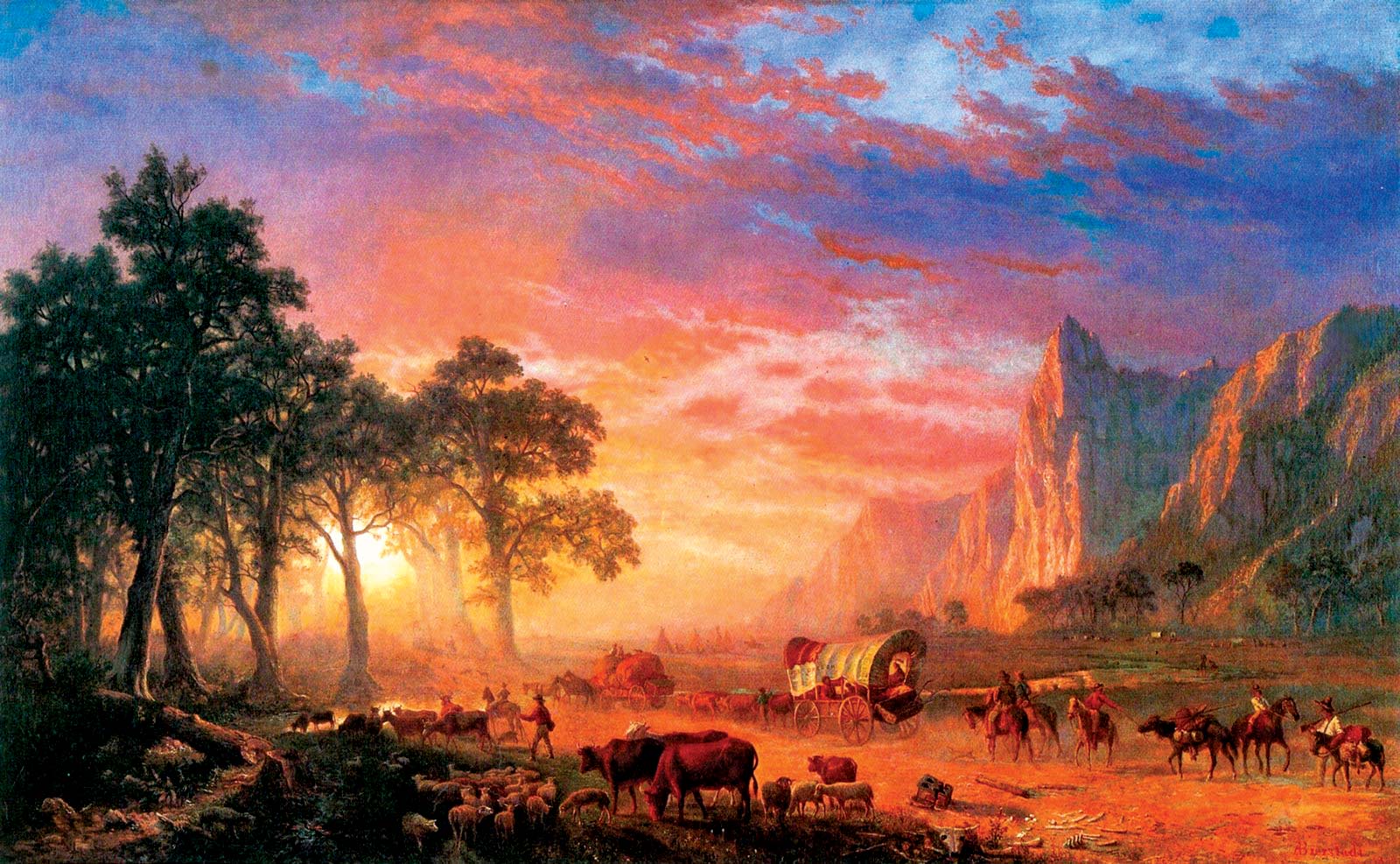
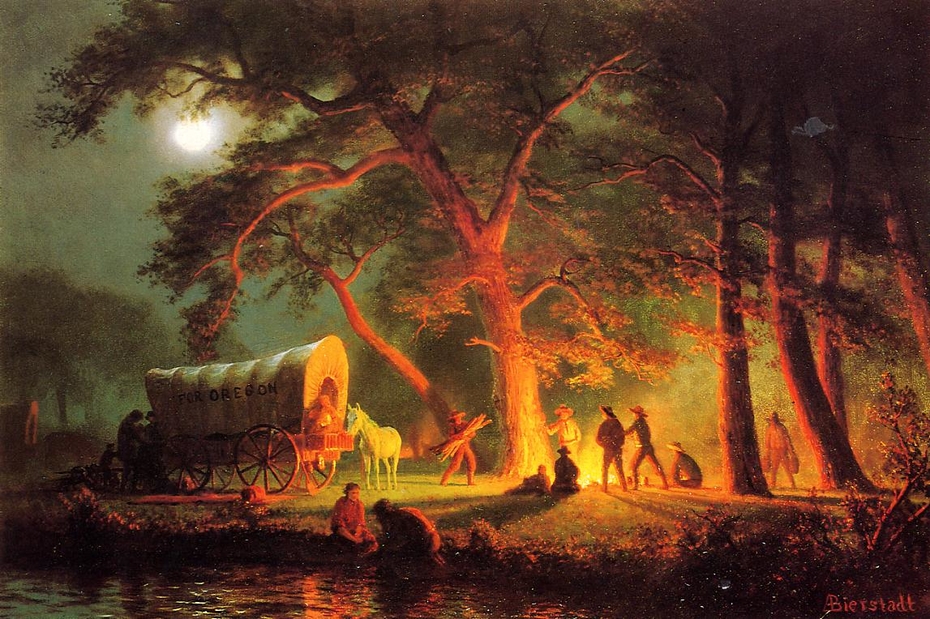
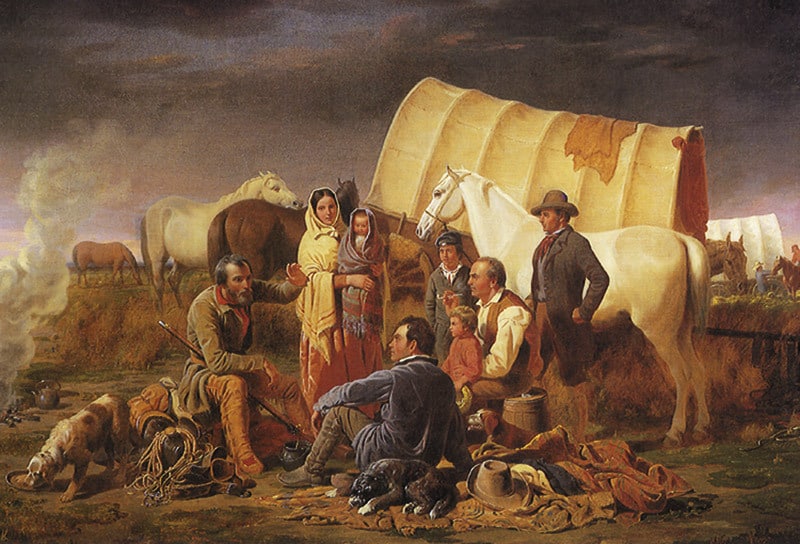
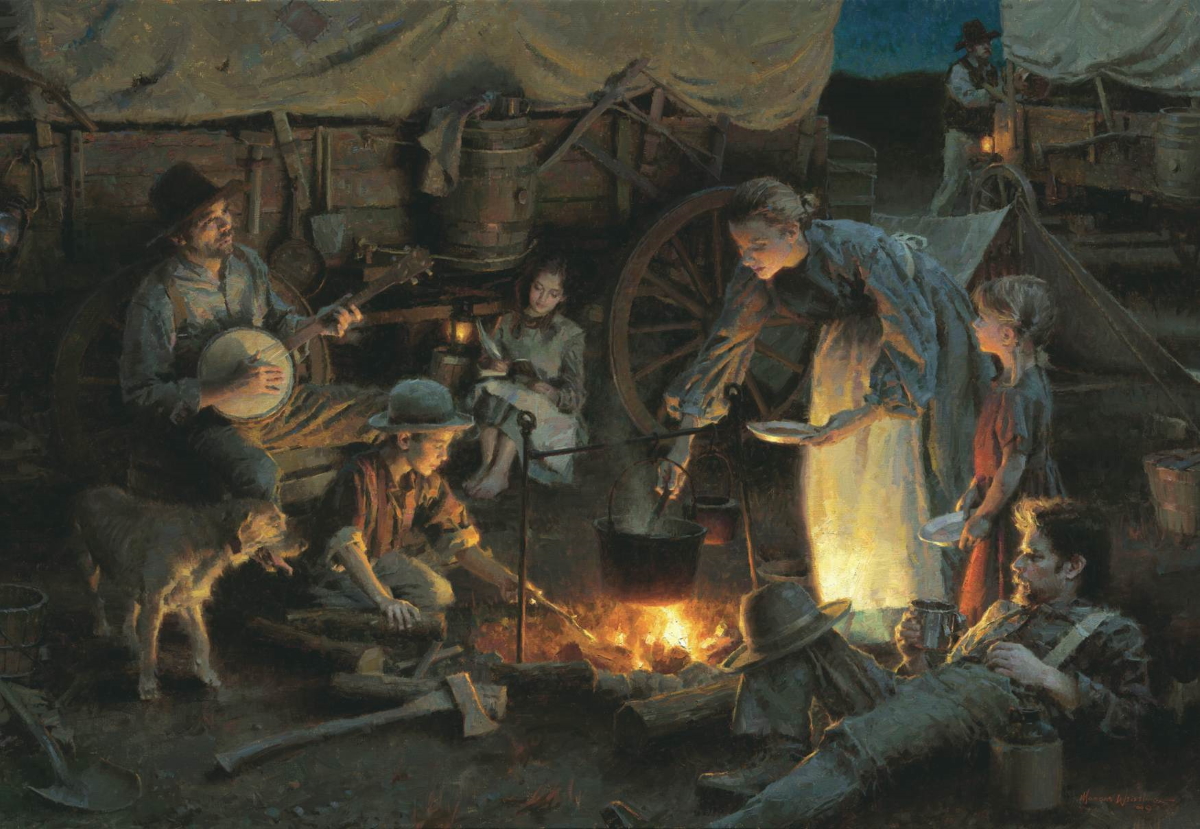
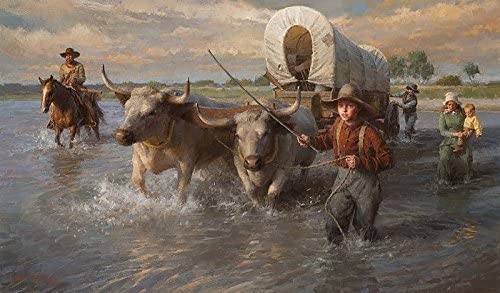
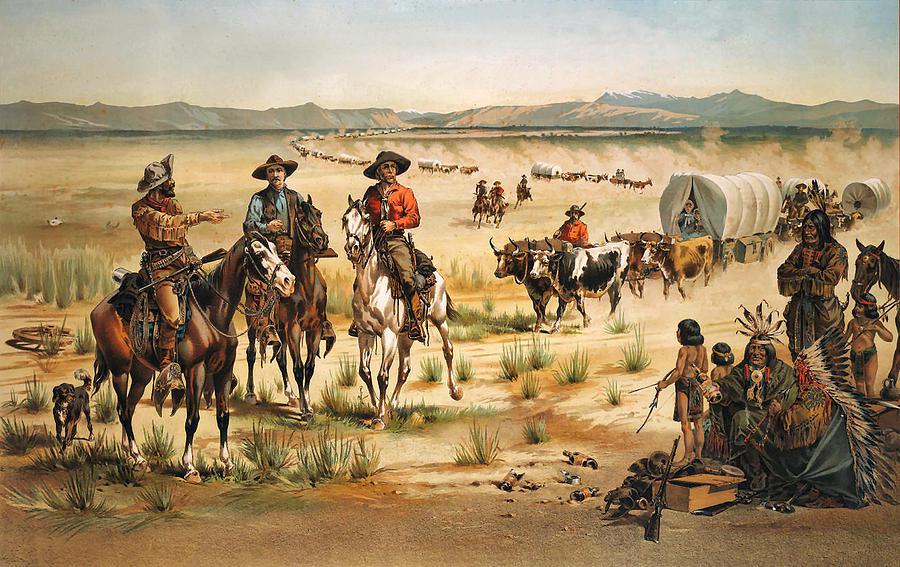
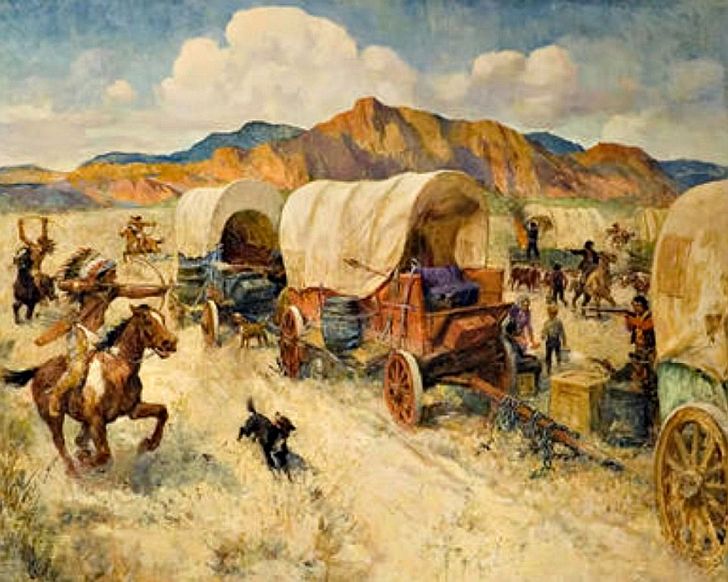

|
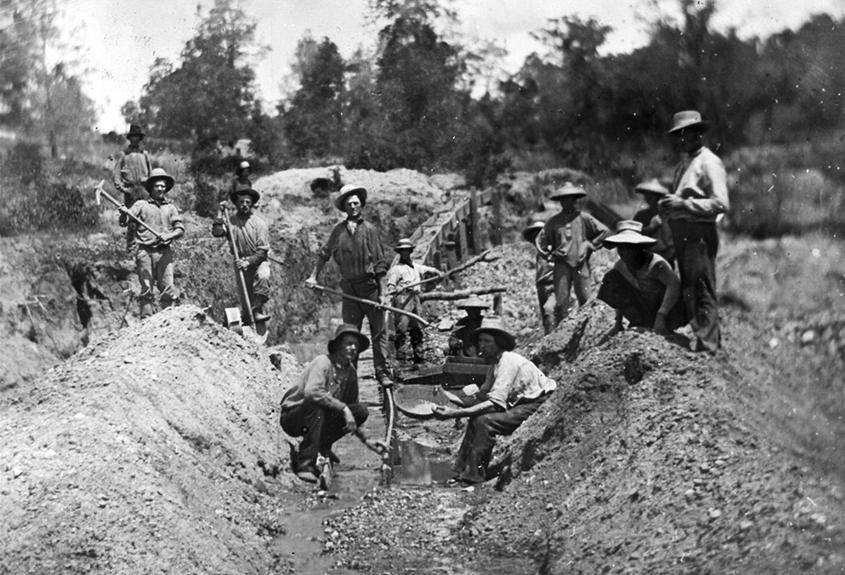
|
Gold in the American West.
But soon many using the Oregon Trail were merely passing through Oregon on their way to California, where gold was discovered in 1848 at Sutter's Mill, fifty miles upriver from Sacramento in northern California. Almost immediately the Oregon Trail had become a flood of migrants – the "Forty-Niners" (1849) – mostly male, heading to the goldfields of California in the hope of striking it rich (only about one in a hundred would find success however). By 1855 some 300,000 Americans had made their way to California, some by the Oregon Trail, some by the long sea route around South America, in either case a long, arduous journey. What they found when they arrived, besides a vastly beautiful landscape, was a wild, unruly collection of hard-working, hard-drinking prospectors, mixed in with thieves and con-artists, prostitutes, and a handful of lawmen trying to build some kind of social order out of the chaos. This was natural man. But it was hardly the kind idealized by the 18th century Frenchman Rousseau (and nearly all comfortable intellectual-utopianists since then), supposing what man in his natural (that is, pre-civilized) state was like. The reality of the West was that it was a dangerous place where survival itself was not guaranteed. It made for very rough personalities and very rough behavior, men and women alike. But it also produced a tough breed of Westerners. The pattern was very similar elsewhere in the West, especially when gold was discovered in Colorado and Arizona, the latter necessitating the creation of the Santa Fe Trail to the American Southwest. These gold rushes produced virtually overnight towns founded on this wild social order, towns which would just as quickly turn to ghost towns when the gold ran out and the gold-hungry citizens moved on to new fields. But some places, such as San Francisco (the transportation and financial center for the fast-rising economy of Northern California) would indeed turn themselves into more conventional-looking American cities as middle-class life began to replace the unruly culture of gold prospecting. By 1850, Manifest Destiny had a full plate in just trying to bring the West into the older American social mainstream.
|
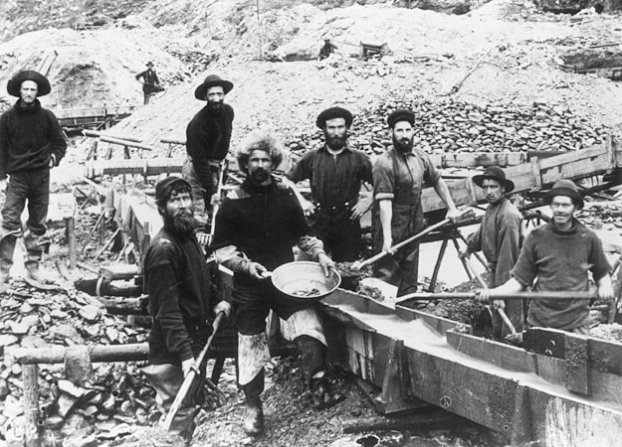
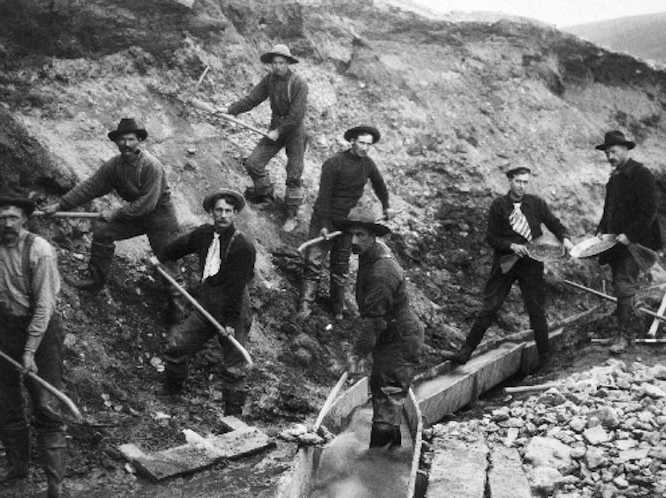
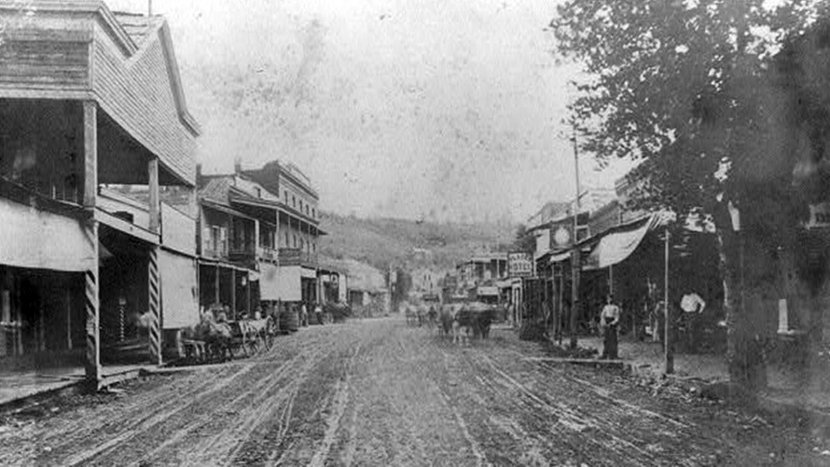
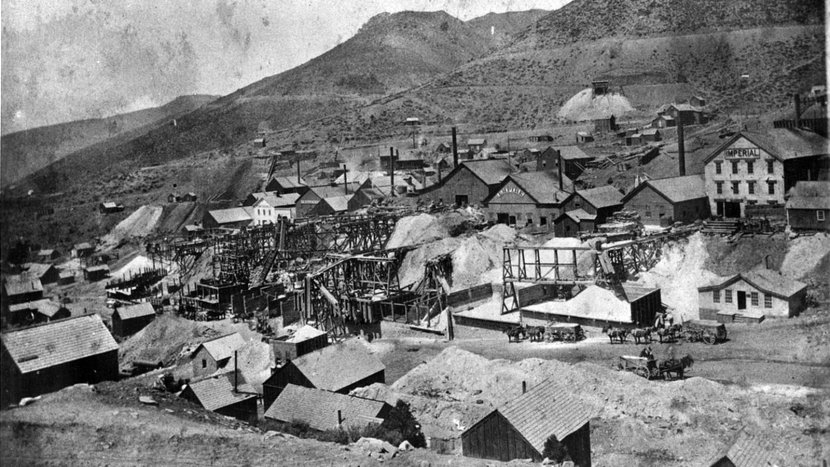
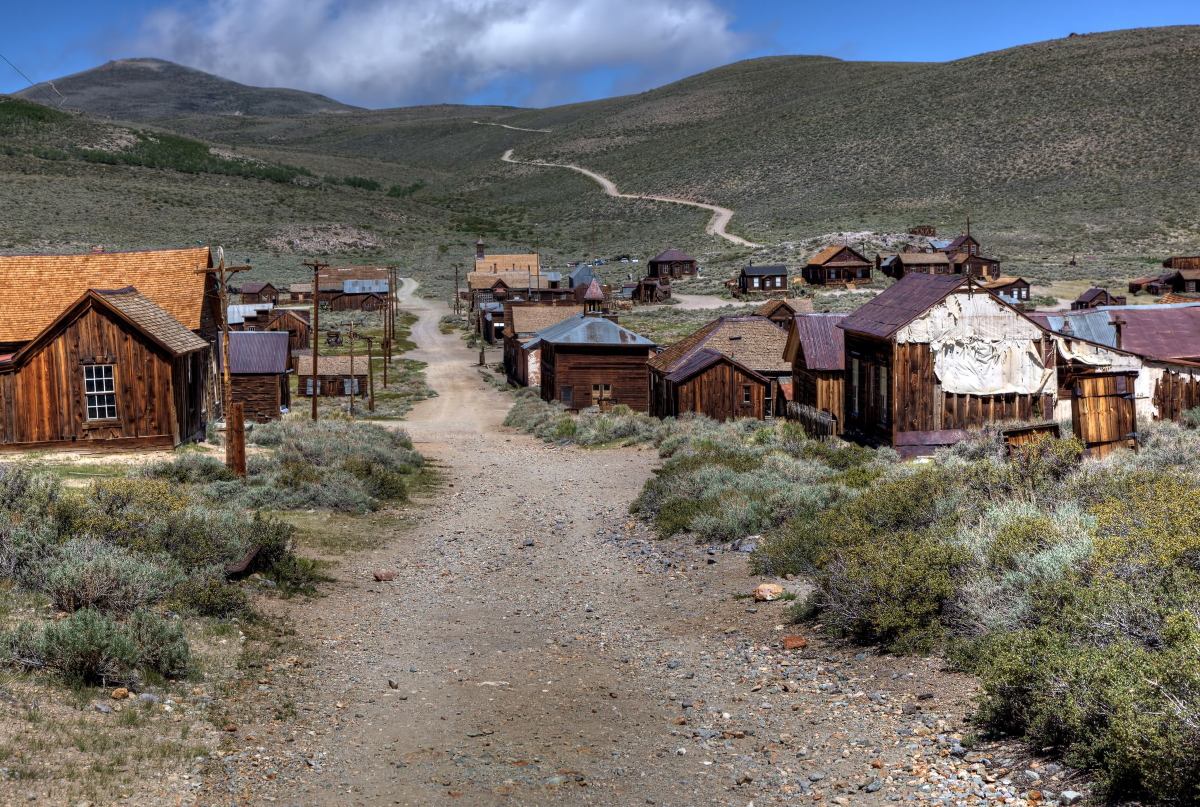
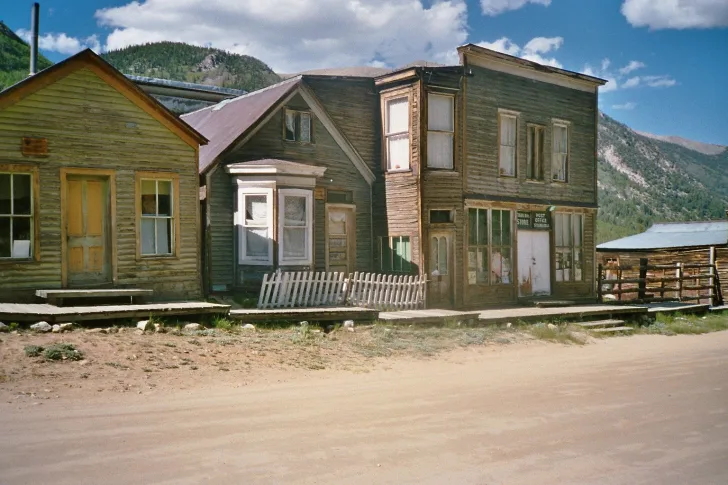
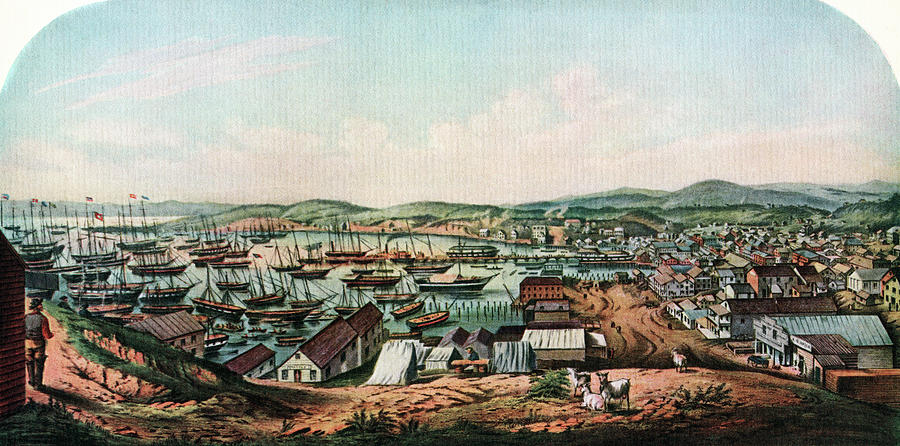
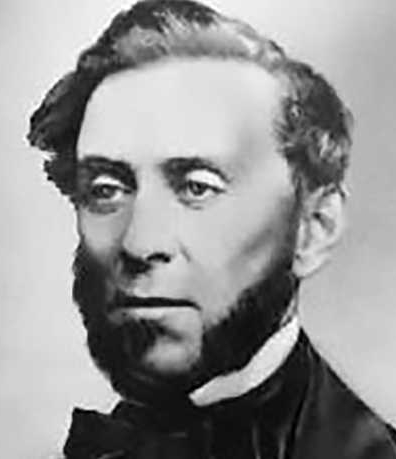
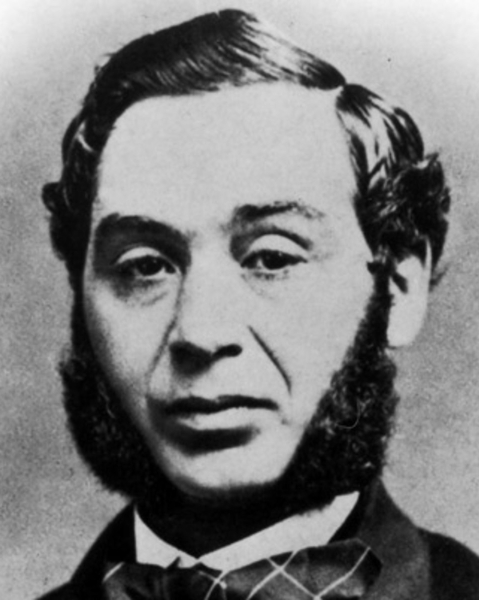


 Miles
H. Hodges
Miles
H. Hodges